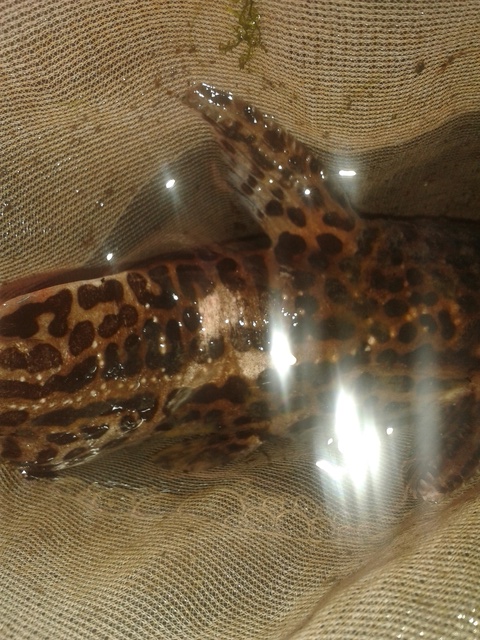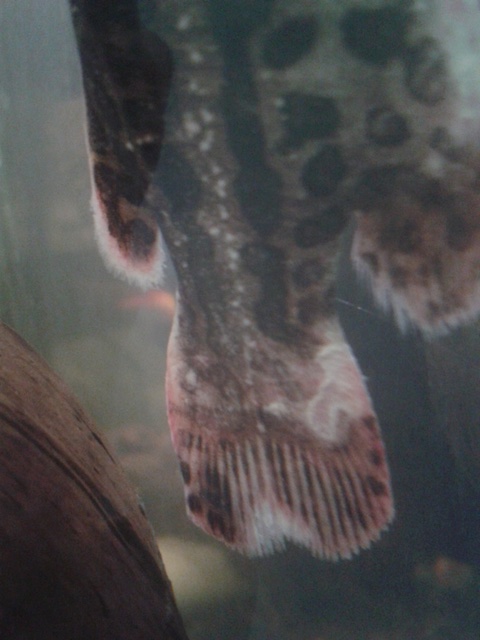Columnaris comes in different strains. Some are mild and easier to cure, others are extremely virulent and kill fast. There are a variety of treatments but I am not at all up on what can be obtained in France. The information below should help. What it boils down to is columnaris is a double edged problem. Because it can and does survive well outside of fish and those which die in tanks from it are major transmitters, one has to consider how to kill this disease both in a fish and then in the tank itself. As you will see from the below information there can be issues. For antibiotics to be effective, they must be eaten- really sick fish stop eating. To kill the disease outside of the fish, the best solution is actually a weed killer. I do not know if you can find that in France.
Finally, I have always looked to the science for help with these sort of issues. To find the science I rely on Google Scholar. This is a search which only reviews scientific literature. I have learned more on Google Scholar regarding things aquarium/fish than on regular Google. I should warn that the terms one uses on Google Scholar will be a lot different than on the Google most are used to. Science does not use the same language as the rest of us, you need to know what terms to enter. For example, you cannot search for "Ich," you must search for "Ichthyophthirius multifiliis."
Abstract
Columnaris disease was induced in channel catfish, Ictalurus punctatus (Rafinesque), by bath exposure to four highly virulent isolates of Flavobacterium columnare. In untreated controls, mortality began 20 h after exposure and reached 100% by 48 h. Mortality in channel catfish given antibiotic treatments with oxytetracycline or a combination of sulphadimethoxine and ormetoprim in feed prior to bacterial challenge was zero with all four strains of F. columnare. Diquat (Zeneca Agricultural Products, Wilmington, DE, USA) was the most effective bath treatment; mortality with all four strains was zero. With potassium ermanganate, chloramine-T, hydrogen peroxide and copper sulphate, bath treatment efficacy varied significantly among strains (P ¼ 0.0346) and among treatments (P ¼ 0.0033). Bath treatments with chloramine-T and potassium permanganate significantly reduced (P < 0.05) mortality from 100 to 75 and 69%, respectively, but copper sulphate and hydrogen peroxide treatments were not effective. Based on
our results, oral antibiotics prevented columnaris disease but, of the bath treatments, only Diquat
produced a dramatic reduction in the mortality of acutely infected fish. Diquat is labelled for aquatic
use as an herbicide in the USA but in large ponds it is prohibitively expensive.
from
https://www.researchgate.net/profile/Sw ... 000000.pdf
Then there is this:
Third, antibiotic treatments are used at farms to control for mortality caused by bacterial diseases. Antibiotics are administered into a tank whenever fish with columnaris disease are detected. Treatment is effective only when the antibiotic is consumed by fish (with fish food). Diseased and moribund fish cease feeding, so that the treatment neither affects the bacteria in them, nor can it affect the bacteria present in the water or in the fish already dead. Therefore, strains that infect and kill their hosts rapidly are most likely to survive the treatment. Also quick degradation of tissue might be favoured: fish tissue detached from host is not affected by antibiotics, either. The antibiotic treatment was only started after 1992 and usage increased since then (figure 1d). So far, F. columnare strains resistant to oxytetracyclin have not been found (P. Koski, Finnish Food Safety Authority, Oulu 2009, personal communication). Selection by oxytetracyclin may have favoured F. columnare strains with most severe symptoms (gill necrosis, killing quickly), that by the time the outbreak was noticed and the antibiotic treatment applied, the bacterium had already escaped into an antibiotic-free niche.
(The bolding is mine)
from
http://rspb.royalsocietypublishing.org/ ... 1/593.full
Mycosis is a fungal issue and would have to be dealt with differently. Normally, fungal issues are a secondary problem. For example a wound on a fish will offer a way for a fungus to set in. Here is some basic info that should help. But from your pictures, I am not sure the problem is fungal. Have a read here
http://aquafind.com/articles/Fungal-Dis ... f-Fish.php Look for the section on Saprolegniasis.
Good luck with it.




